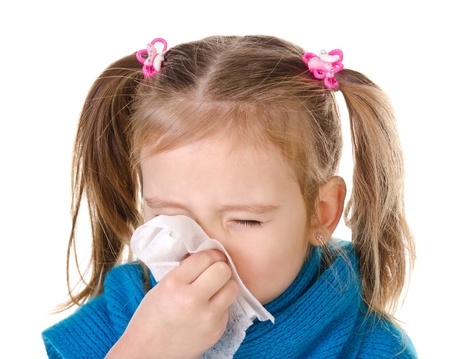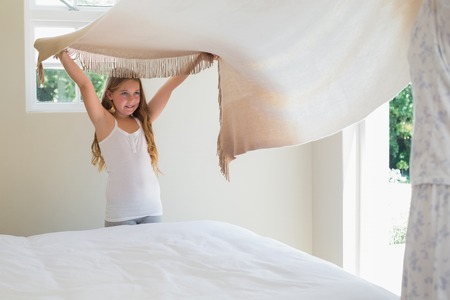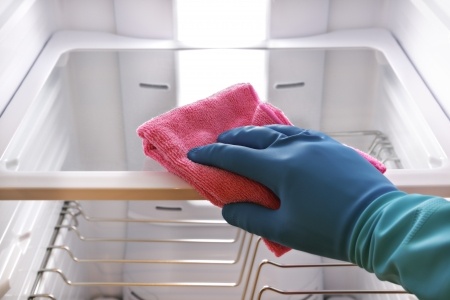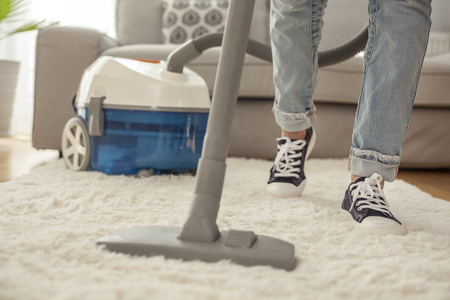- Clean Home
- Clean
- Cleaning To Control Allergy Symptoms
Cleaning To Control Allergy Symptoms
If you have seasonal allergies, you don't need me to tell you spring has arrived.
Four of the most common allergy and asthma triggers are lurking right under your nose: animal dander, dust and dust mites, mold, and mildew. And that seasonal debutante, pollen.
Here's the dirt on cleaning to control allergy symptoms and prevent (when possible) asthma and allergy triggers in your home.
By following these tips, you can significantly improve your health and well-being. This will give you a sense of empowerment and control over your environment, helping you and your family breathe easier.
Cleaning to Control Allergy Symptoms for the Asthmatic in Your Home
Clean in spurts to minimize exposure to airborne allergens and asthma triggers in cleaning products. If you're asthmatic, have someone else clean when possible; if it's a family member, try to clean when they are out of the home for several hours.
Be sure to open the windows or turn on the fan while cleaning to minimize exposure to cleaning products.
Cleaning To Control Allergy Symptoms in Bedrooms
Bedrooms are a dust mite's home base, thanks to the proliferation of shed skin here - a mite's favorite meal. Be especially diligent in cleaning here:
- Remove carpeting if asthma or dust allergies are severe.
- Dust frequently with a damp cloth.
- Vacuum frequently using a HEPA filtered vacuum cleaner.
- Launder curtains regularly; better yet replace curtains with shades. Avoid blinds - they're dust magnets.
- Encase the mattress in a hypoallergenic cover.
- Get rid of clutter and dust collectors, such as magazines, decorations, and stuffed animals, or store them in closed boxes or cloth bags.
- Keep the bedroom door closed.
- Launder sheets and pillows weekly in warm water; tumble dry. Blankets, comforters, and mattress pads should be washed monthly.
- Vacuum both sides of the mattress for at least two minutes twice monthly to reduce the dust and allergens in the bed.
- Keep furry or feathered pets out. If one takes a catnap on the bed, wash the bedding as soon as possible.
Kitchen Cleaning
Mold and mildew are your biggest challenges in the kitchen.
- Keep under-sink cabinets and countertops clean and dry. Clean regularly using a disinfectant (antibacterial) cleaner formulated to kill mildew.
- Moisture inside the fridge makes it a prime breeding ground for mold. Clean the wall and shelves regularly using a non-abrasive, all-purpose cleaner or solution of baking soda and water.
- Wipe up water that accumulates in the crisper drawers, and clean them regularly.
Bathroom Allergy Triggers
Bathrooms' warm, wet environs are prime growing grounds for mold and mildew. To help prevent this growth, repair any leaks, use the exhaust fan after bathing, keep air circulating, and keep the surfaces clean and dry.
- Wash fabric shower curtains with detergent and liquid bleach (the color-safe variety). Presoak heavily mildewed areas in 1/4 cup bleach and 1-gallon water.
- Scrub vinyl shower curtains with liquid bleach or a mildew remover before washing. Don't put them in the dryer.
- After showering, sponge or squeegee dry the shower walls.
- Keep the shower door or curtain open after use.
- Clean shower stalls and bathtubs weekly using a non-abrasive all-purpose or disinfectant cleaner.
- Mold and mildew patrol requires a mildew remover. Use in a well-ventilated area; a person with asthma shouldn't use these cleaners. Disinfectant cleaners used two to three times a week will prevent mildew from getting a toehold in the future.
Cleaning To Control Allergy Symptoms in Living and Family Rooms
In the living and family rooms, you'll often find a potpourri of dust, dust mites, animal dander, pollen, mold, and mildew.
- Vacuum these rooms weekly with an allergen-control vacuum - more often if you have a pet and during heavy allergy seasons. Go against the carpet's nap, taking a minimum of six to eight strokes over each area. Empty or replace the bag when it is half full. (Full bags result in less suction power, meaning a less-efficient vacuuming session.
- Area rugs should be used in entryways to trap and hold dust and dirt and keep outdoor allergens away from living areas. Regularly shake them outdoors and away from open windows and your face. Launder them weekly.
- Vacuum wood floors regularly.
- Dust regularly with a damp cloth or a dust-attracting cloth. (Dry dusting sends dust spiraling into the air and back down onto your surfaces.)
- Launder curtains frequently to remove dust and dust mites.
- Clean window frames and sills regularly, looking out for condensation, mold, and mildew. Clean up and repair as needed.
- Regularly wash soft, machine-washable toys.
Cleaning To Control Allergy Symptoms in the Attic and Basement
Mold, mildew, dust, and dust mites reside happily in attics and basements, thanks to the warm, dark, and moist atmosphere.
- Store items in attics and basements inside plastic boxes or closed cloth bags.
- If mold and mildew are a recurring problem, use a dehumidifier to keep the relative humidity between 35 percent and 50 percent.
- Clean Home
- Clean
- Cleaning To Control Allergy Symptoms











